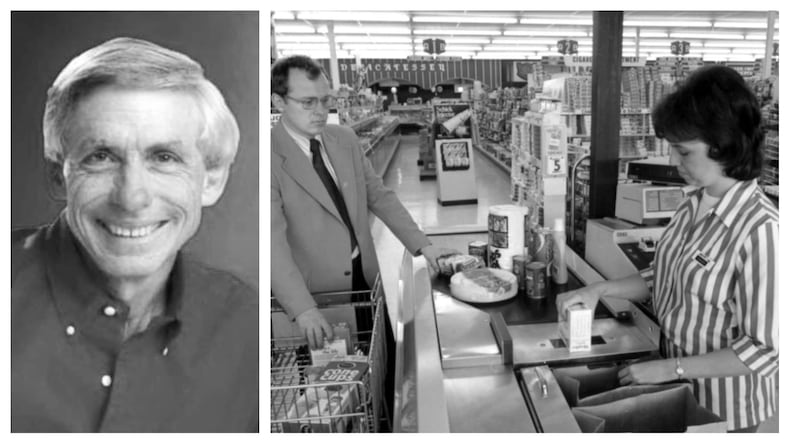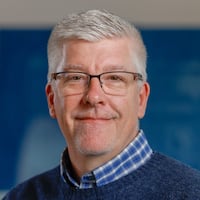It started with a pack of gum that was scanned using an NCR model 255 cash register. What made this all possible is what’s now known universally as the bar code.
The UPC bar code has revolutionized the way we do business, and is used millions of times a day all over the world.
Dayton native Paul McEnroe played a big part in this accomplishment.
Valedictorian
McEnroe was raised in Dayton and attended Chaminade High School. He was one of three featured speakers during the school’s graduation ceremony, held at the NCR auditorium.
After high school, McEnroe attended the University of Dayton where he studied electrical engineering. He graduated in 1959 as valedictorian and also received the President’s Award for Excellence in Debate.
It has been said that the idea for the bar code scanner was born on the day of his UD graduation. Robert S. Oelman, president of the National Cash Register Co., was receiving an honorary degree that same day, and the two of them discussed point-of-sale technology at the event.
McEnroe went on to Purdue University, where he received his master’s degree in engineering in 1960.
He was honored as the University of Dayton’s Most Distinguished Alumnus in 1998.
IBM, Trilogy Systems Corp. and Digital Equipment Corp.
After college, McEnroe joined IBM as an engineer.
In 1969 he was assigned to a project that would address new marketing needs of supermarkets and retail stores.
He assembled a team and led the group in creating the Universal Product Code, commonly called the bar code.
Credit: NCR Archives
Credit: NCR Archives
The bar code was accepted as an international standard in 1974.
In a 2016 interview with the Santa Ynez Valley News, McEnroe said, “We were not allowed to file a patent on it. We had to release it to the public domain.”
However, his team had also created the magnetic strip used to store data, and the scanners used to read the bar codes. McEnroe was granted a patent on the hand-held scanner in 1972. “The hand-held scanner they’re using today is the same as the one I patented more than 40 years ago,” McEnroe said.
The magnetic code for Stock Keeping Unit (SKU) markings was also developed by McEnroe and his team.
McEnroe became director of systems development. then director of the Raleigh Lab, where he was responsible for the development and business management of IBM’s communications products. McEnroe helped develop token ring network technology, custom chips and IBM’s first intelligent terminal.
McEnroe stayed with IBM for 23 years before moving on to become president of Trilogy, a computer systems company in Silicon Valley, where he developed copper-polyimide multi-chip module technology. He became president and chief operating officer of Trilogy Systems Corp. in 1984.
McEnroe later negotiated a merger between Trilogy and Digital Equipment Corp. and continued to work there until his retirement in 1992.
Retirement
Looking back on his career, Monroe said, “I have been most fortunate for the opportunity to have worked with wonderful people throughout my life, many of the pioneers of computers, famous people, but also so many other competent and hard-working people who made great contributions but unheralded, in the work for the good of mankind.”
Growing up in Dayton, McEnroe dreamed of being a cowboy. He finally got his chance to do that in retirement. He and his wife, Tina, bought Rancho La Purisima, a 1,000-acre ranch located just north of Buellton, Calif.
According to the Barnes and Noble website, McEnroe has written a soon-to-be published memoir. “The Barcode: How a team created one of the world’s more ubiquitous technologies” is available for pre-order and is scheduled to be published Sept. 19.
About the Author



